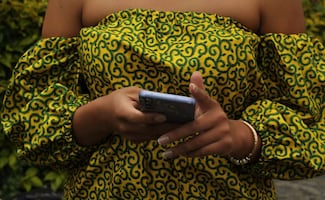Más Información

Senadora de Morena presenta punto de acuerdo para proteger datos de usuarios de líneas telefónicas; advierte vulneraciones de seguridad

Piden investigar a fuerzas federales y a policías de Apodaca en desaparición forzada de académico colombiano

Sigue polémica por entrevista de Sabina Berman a Verástegui; YouTube la elimina tres veces, acusa escritora
Luis Equihua
from the Research and Industrial Design Center ( CIDI ), from the UNAM's Architecture Faculty , is c oordinating Paola González and Agustín Robledo, industrial designer s, to collaborate with chef and historian Rodrigo Llanes , to create a set of plates and glasses similar to those used in 1512 by Moctezuma Xocoyotzin or Moctezuma II.
It is known that M octezuma Xocoyotzin (1466-1520) was the “ huey tlatoani” (great governor, great orator in Náhuayl) , of the Mexica between 1502 and 1520.
He met with Cortés on November 8, 1519 , he was convinced that Cortés was Quezalcóatl , and agreed to all his demands ; he even agreed to be baptized and declared a Spanish subject.
The idea to recreate Moctezuma's plates and glasses came up when chef Llanes studied his bachelor degree in History at the Philosophy and Letters Faculty, UNAM. His dissertation was titled “Conquest à la carte” , a study of the way the Spanish ate once they arrived in the American continent.
He dedicated a chapter to describe the ritual the Mexica nobility performed when Moctezuma was about to eat. This everyday endeavor surprised the Spanish.
While the huey tlatoani sat, the children of the Mexica nobility showed him 300 plates with 30 different dishes , placed over a broiler so it didn't get cold. Moctezuma pointed out which one he wanted, then the servants washed his hands and he started to eat, mostly by himself.
From Llanes perspective , it was really important to rescue this gastronomic ritual , and the relevant aspect of it was the plates. The plates represented key aspects of the Mesoamerican tradition.
Later, the chef and historian found out that Equihua was studying the “gastronomical bas e” and contacted him to talk to him about the project he had in mind, which was developed in a year and a half.
During that period, González and Robleda, CIDI designers, worked together to analyze the forms, the figures y the artistic and religious concepts of the Mexica world.
“ The pieces are designed based on sacred numbers ; everything corresponds to a profound analysis of the forms and Mexican element of that period”, says Robledo.
When they chose the materials to recreate the plates: obsidian, basalt, ceramic and wood , they had to reevaluate the artisan techniques used to make the original pieces. In Equihua's opinion, academic research allowed them to explore new materials that hadn’t been considered, like basalt and obsidian. In regards to this, the search for basalt and artisans who knew how to use it took them to El Seco, a town near Xalapa, Veracruz.
“The plates were a hit, it sparked off other processes, like opening markets for the artisans",
he says.
One of the pieces from the set incorporates the crossroad of fire and water , elements of the Mexica symbology by using two different wood colors: bright and dark.
“We wanted to represent the Mesoamerican worldview in the plates. Visually it's just wood, but it has all these elements behind”, says Robledo.
This sumptuous dinner set rescues Moctezuma's protocol . Sometimes, the food ritual was public and before he ate, the huey tlatoani grabbed corn grains from different colors and varieties and threw them in the direction of the four cardinal points and the sky so there was always food in the city.
The dinner set recreated be the designers is used by the Chef Collective that works in the El Jolgorio restaurant , near the Plaza de Cibeles, in the Roma neighborhood, in Mexico City.
gm
Noticias según tus intereses
[Publicidad]
[Publicidad]











